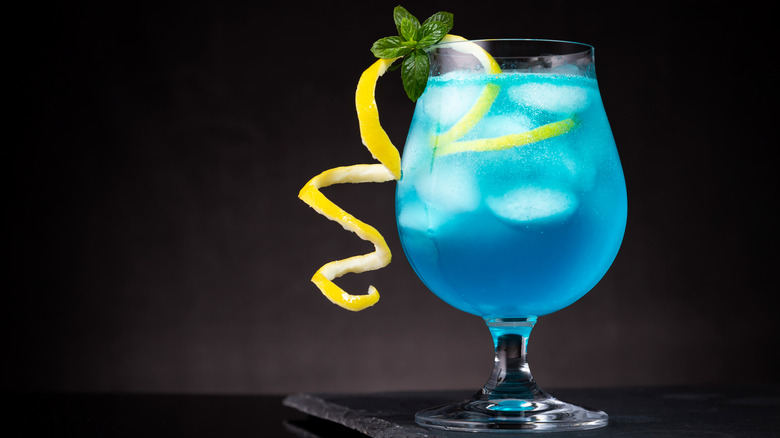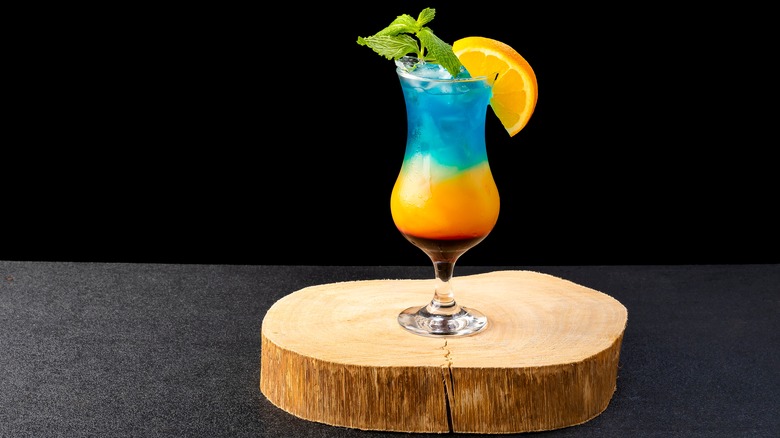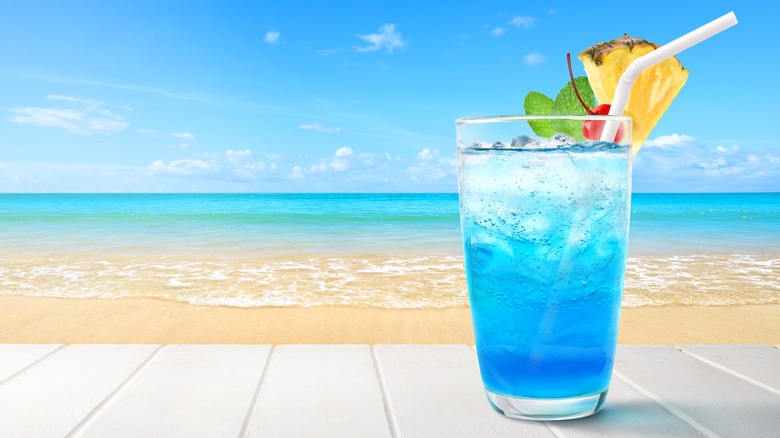Blue Curaçao Tastes Like Oranges. So Why Is It Blue?
If you remember the first time you tasted blue curaçao liqueur, there's a good chance you noticed a certain dissonance between the drink's color and its flavor. The color is a vibrant, deep blue, almost reminiscent of the tropical Caribbean Sea, yet when it hits your tongue, it has the decidedly non-blue taste of oranges.
So, what's the deal? First, there are no blue citrus fruits out there, so the color of the drink is not natural. It's generally believed that the liqueur likely started to be artificially colored so it could be used to make more attractive-looking cocktails. The origin of this idea is a bit hazy, but colored curaçao goes back to at least the 1920s. Over the years, it's come in an array of colors, including green, orange, and red. Various colors are still on the market to some degree, but the blue and clear curaçao varieties remain the most common.
What makes it blue?
Once the distilling and production process is complete, curaçao liqueur is naturally clear. The deep azure color comes from artificial coloring that's added to the liquid. Longtime blue curaçao producer Senior & Co. uses "certified" colorings, meaning they're synthesized food dyes that are inspected and certified every time a new batch is made.
Senior & Co. is coy about the exact coloring it uses in blue curaçao, and doesn't openly specify it on its official website. But other sources suggest blue curaçao uses a colorant known as "Brilliant Blue FCF" (also referred to as E133), which is typically used to color sweet treats like cakes and candy.
This synthetic dye is derived from coal tar. But don't panic: The colorant is approved for use in food by both the FDA and the European Union's Food Safety Authority, having received its approval in the U.S. by 1931. While a number of European countries once banned Brilliant Blue, they have since reversed course. The dye mostly passes through your body without getting absorbed.
How to use Blue Curaçao
Curaçao, the liqueur, is crafted with a specific type of citrus: the Laraha orange, which grows on Curaçao, the island. After trying and failing to cultivate Valencia oranges on Curaçao, Spanish colonizers found that the Laraha orange — itself a descendant from abandoned Valencia crops — had a deliciously fragrant peel, prompting them to use it in distillation.
Its flavor is distinctly orange, blending a mix of sweet and bitter notes. This makes blue curaçao comparable to other orange-based liqueurs like Triple Sec and Cointreau. It generally works nicely in cocktails requiring those ingredients, but bear in mind that using blue curaçao results in a very blue drink. You can try adding it to classic drinks like a margarita cocktail for a photogenic twist. The oh-so-tropical Blue Hawaii cocktail — made with rum, vodka, and pineapple — is another great way to use the liqueur. The Blue Lagoon, which keeps things simple with vodka and lemonade, also lists it as an ingredient. But be warned: The blue color might not look so appetizing when mixed with other colorful liquids, so if you're experimenting, blue curaçao generally works best with clear or lightly-colored spirits and mixers.



